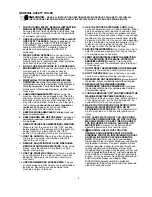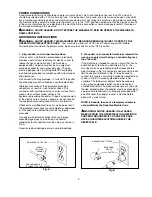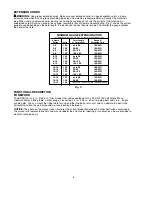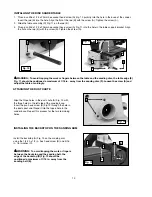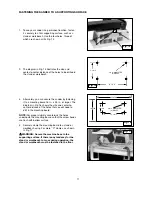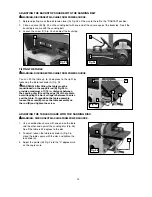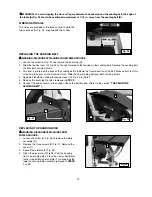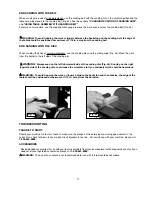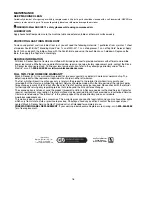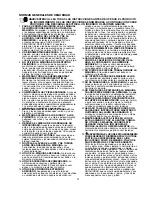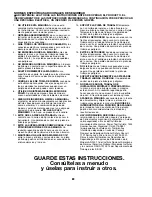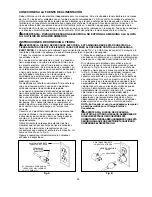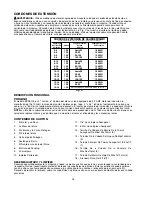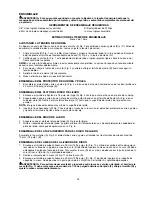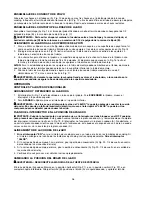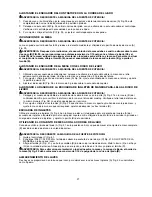
12
1.
Turn the switch “ON”
to see if the sanding belt
moves to one side or the other on the sanding
drums. If the belt rides on the center of the sanding
drums, it is tracking properly.
Turn the switch
“OFF”
.
2.
If the sanding belt moves toward the disc, turn the
tracking knob (A) Fig. 20 counter-clockwise 1/4 turn.
3.
If the sanding belt moves away from the disc, turn
the tracking knob (A) Fig. 20 clockwise 1/4 turn.
4.
Check again to see if the belt is tracking properly.
IMPORTANT: When the tool is not in use, the switch
should be locked in the “OFF” position to prevent
unauthorized use.
To lock the machine, grasp the
switch toggle (A) and pull it out of the switch (Fig. 19).
With the switch toggle (A) removed, the switch will not
operate. However, should the switch toggle be removed
while the saw is running, the machine can be turned
“OFF”,
but cannot be restarted without re-inserting the
switch toggle.
LOCKING THE SWITCH IN THE “OFF” POSITION
Fig. 19
TRACKING THE SANDING BELT
Fig. 20
CHANGING THE POSITION OF THE SANDING ARM
You can use the sanding arm (A) in the horizontal position (Fig. 21), the vertical position (Fig. 22), or any angle in
between. Loosen the screw (B), position the arm (A) to the desired angle, and tighten the screw (B).
WARNING:
DISCONNECT MACHINE FROM POWER SOURCE.
A
A
B
A
B
A
Fig. 21
Fig. 22
1.
The on/off switch (A) Fig. 18 is located on the front
of the sander. To turn the machine
“ON”,
move
the switch up to the “ON” position.
2.
To turn the machine
“OFF”,
move the switch (A)
down to the “OFF” position.
WARNING: Make sure that the switch is in the “OFF” position before plugging in the power cord. In the
event of a power failure, move the switch to the “OFF” position. An accidental start-up can cause injury.
A
Fig. 18
OPERATION
OPERATIONAL CONTROLS AND ADJUSTMENTS
STARTING AND STOPPING THE SANDER



